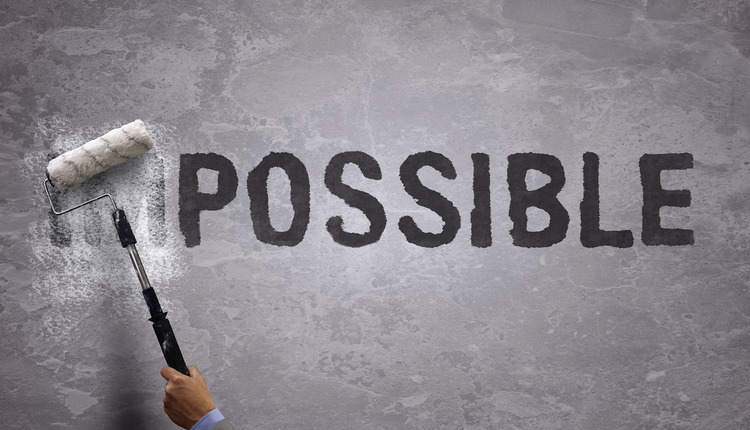A few decades ago, retailers relied solely on opening physical stores to sell their merchandise and launch their brands. To compete, retailers and marketplaces like Amazon and eBay countered this trend by opening online storefronts, giving time-strapped consumers a new way to conveniently shop and have goods delivered.
Fast-forward to today and the vast majority of traditional retailers are all online. However, a new strategy that is continuing to gain traction is more savvy online retailers are opening brick-and-mortar stores to offer a hybrid shopping experience by connecting both physical and digital interactions.
To build a successful clicks-to-bricks strategy, fulfillment and delivery are critical. More consumers will continue to shop online. This is a trend that will not be broken. However, by offering store pick-up, retailers can drive online traffic to physical stores, providing add-on and up-sell opportunities. Also, shipping matters when it comes to buying decisions. Therefore, retailers should offer flexible shipping options for direct delivery and even same day delivery to help build customer loyalty.
When a brick-and-mortar store becomes a mini warehouse and fulfillment center, it’s critical to have robust inventory and shipping management systems that integrate with order processing and routing optimization. Retailers should work with multiple couriers and regional carriers that can cover smaller areas so they can provide more ground-delivery options.
Physical stores can also help serve as showrooms and drive purchasing decisions. For instance, I recently purchased a new lamp for my living room. My shopping experience started with online research at several retail sites. Once I found a lamp that I liked, I visited the retailer’s physical store so I could get a better idea of the shape, size, quality, and whether it would match my furniture before I purchased it.
Two Flavors of Click-to-Brick Stores
There are two main flavors of click-to-brick stores:
1) Pop-up Stores -- Temporary shops or “pop-up stores” allow retailers to reach customers in various locations over different time periods to test concepts and sell merchandise. Zappos opened its first physical store last November in Las Vegas. The shop blended online and offline retail and was open 24 hours-a-day, seven days a week, from November 21 until December 31. If shoppers couldn’t find what they were looking for, Zappos offered them the same fast and free shipping options it offers on its website.
Amazon also recently tested pop-up shops through kiosks in shopping malls in San Francisco and Sacramento so consumers could try its latest devices. Amazon’s pop-up shops emerged following wide-spread news reports last October that it would open a permanent store in New York City. The store would function as a min-warehouse with limited inventory for same-day delivery, offer product returns, exchanges, and pickups of online orders, and serve as a distribution center for couriers. It would also likely one day feature Amazon devices. While we don’t know what the future holds for Amazon in the physical space, this offers a glimpse into how online retailers could shape future delivery models to reach consumers in local markets.
2) Permanent Storefronts -- Warby Parker and Bonobos are two examples of retailers that have gone from clicks-to-bricks in recent years. Trendy eyeglass maker Warby Parker opened its first physical store in New York City in 2013 after gaining a successful online customer base. They sell all of their boutique-quality glasses for $95 through their website and showrooms. Nonprescription eyewear can be purchased at their stores. Prescription eyewear is shipped to customers, which is the same for an online order.
Fashion retailer Bonobos first gained recognition with its line of pants. However, when the retailer tried to sell shirts online in 2012, no one bought them. After customers kept inquiring about a place to try on their shirts, the retailer built a few fitting rooms in its office’s lobby. This spread by word-of-mouth. Today, Bonobos has 10 brick-and-mortar shops in the U.S. and is planning to add more.
Bonobos’s customer service model encourages shoppers to make appointments at their shops to try on clothes before ordering online. Serving as a virtual website, the brick-and-mortar stores offer one of every item to look at and try on in different sizes, styles and colors. There’s no inventory for sale in the store. Items are shipped to customers.
Looking Ahead
As retailers continue to innovate and improve on the overall customer experience, how they cater to shoppers in the physical and digital worlds will continue to change. However, one thing remains the same -- the key will be to offer a seamless shopping experience across channels and provide flexible delivery options.
Christoph Stehmann is Chief Operating Officer, Digital Commerce Solutions, Pitney Bowes.
Fast-forward to today and the vast majority of traditional retailers are all online. However, a new strategy that is continuing to gain traction is more savvy online retailers are opening brick-and-mortar stores to offer a hybrid shopping experience by connecting both physical and digital interactions.
To build a successful clicks-to-bricks strategy, fulfillment and delivery are critical. More consumers will continue to shop online. This is a trend that will not be broken. However, by offering store pick-up, retailers can drive online traffic to physical stores, providing add-on and up-sell opportunities. Also, shipping matters when it comes to buying decisions. Therefore, retailers should offer flexible shipping options for direct delivery and even same day delivery to help build customer loyalty.
When a brick-and-mortar store becomes a mini warehouse and fulfillment center, it’s critical to have robust inventory and shipping management systems that integrate with order processing and routing optimization. Retailers should work with multiple couriers and regional carriers that can cover smaller areas so they can provide more ground-delivery options.
Physical stores can also help serve as showrooms and drive purchasing decisions. For instance, I recently purchased a new lamp for my living room. My shopping experience started with online research at several retail sites. Once I found a lamp that I liked, I visited the retailer’s physical store so I could get a better idea of the shape, size, quality, and whether it would match my furniture before I purchased it.
Two Flavors of Click-to-Brick Stores
There are two main flavors of click-to-brick stores:
1) Pop-up Stores -- Temporary shops or “pop-up stores” allow retailers to reach customers in various locations over different time periods to test concepts and sell merchandise. Zappos opened its first physical store last November in Las Vegas. The shop blended online and offline retail and was open 24 hours-a-day, seven days a week, from November 21 until December 31. If shoppers couldn’t find what they were looking for, Zappos offered them the same fast and free shipping options it offers on its website.
Amazon also recently tested pop-up shops through kiosks in shopping malls in San Francisco and Sacramento so consumers could try its latest devices. Amazon’s pop-up shops emerged following wide-spread news reports last October that it would open a permanent store in New York City. The store would function as a min-warehouse with limited inventory for same-day delivery, offer product returns, exchanges, and pickups of online orders, and serve as a distribution center for couriers. It would also likely one day feature Amazon devices. While we don’t know what the future holds for Amazon in the physical space, this offers a glimpse into how online retailers could shape future delivery models to reach consumers in local markets.
2) Permanent Storefronts -- Warby Parker and Bonobos are two examples of retailers that have gone from clicks-to-bricks in recent years. Trendy eyeglass maker Warby Parker opened its first physical store in New York City in 2013 after gaining a successful online customer base. They sell all of their boutique-quality glasses for $95 through their website and showrooms. Nonprescription eyewear can be purchased at their stores. Prescription eyewear is shipped to customers, which is the same for an online order.
Fashion retailer Bonobos first gained recognition with its line of pants. However, when the retailer tried to sell shirts online in 2012, no one bought them. After customers kept inquiring about a place to try on their shirts, the retailer built a few fitting rooms in its office’s lobby. This spread by word-of-mouth. Today, Bonobos has 10 brick-and-mortar shops in the U.S. and is planning to add more.
Bonobos’s customer service model encourages shoppers to make appointments at their shops to try on clothes before ordering online. Serving as a virtual website, the brick-and-mortar stores offer one of every item to look at and try on in different sizes, styles and colors. There’s no inventory for sale in the store. Items are shipped to customers.
Looking Ahead
As retailers continue to innovate and improve on the overall customer experience, how they cater to shoppers in the physical and digital worlds will continue to change. However, one thing remains the same -- the key will be to offer a seamless shopping experience across channels and provide flexible delivery options.
Christoph Stehmann is Chief Operating Officer, Digital Commerce Solutions, Pitney Bowes.




